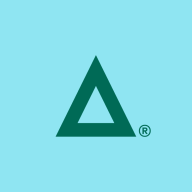


Fortra Tripwire IP360 and Lacework FortiCNAPP are two cybersecurity solutions. Lacework FortiCNAPP seems to have the upper hand due to its innovative cloud-native capabilities and high customer satisfaction, despite Fortra Tripwire IP360's cost-effectiveness and support strengths.
Features: Fortra Tripwire IP360 offers a strong vulnerability assessment, comprehensive risk scoring, and asset visibility. Lacework FortiCNAPP provides cloud-native application protection, deep security insights, and automation capabilities.
Room for Improvement: Fortra Tripwire IP360 could benefit from more seamless cloud integration, enhanced automation features, and simplified deployment processes. Lacework FortiCNAPP might improve its initial cost structure, expand its support for traditional infrastructure, and streamline incident response features.
Ease of Deployment and Customer Service: Lacework FortiCNAPP is known for its seamless cloud integration and responsive customer service, contributing to easier deployment. Fortra Tripwire IP360, while effective, involves more complex deployment due to reliance on traditional infrastructure methods.
Pricing and ROI: Fortra Tripwire IP360 offers a more economical cost structure that delivers a solid ROI for budget-conscious users. Lacework FortiCNAPP, though having higher setup costs, provides significant ROI through enhanced security features and scalability.



Zafran Security integrates with existing security tools to identify and mitigate vulnerabilities effectively, proving that most critical vulnerabilities are not exploitable, optimizing threat management.
Zafran Security introduces an innovative operating model for managing security threats and vulnerabilities. By leveraging the threat exposure management platform, it pinpoints and prioritizes exploitable vulnerabilities, reducing risk through immediate remediation. This platform enhances your hybrid cloud security by normalizing vulnerability signals and integrating specific IT context data, such as CVE runtime presence and internet asset reachability, into its analysis. No longer reliant on patch windows, Zafran Security allows you to manage risks actively.
What are the key features of Zafran Security?
What benefits can users expect from Zafran Security?
In industries where security is paramount, such as finance and healthcare, Zafran Security provides invaluable protection by ensuring that only exploitable vulnerabilities are addressed. It allows entities to maintain robust security measures while allocating resources efficiently, fitting seamlessly into existing security strategies.
Tripwire IP360 is a powerful vulnerability management solution that identifies and prioritizes network vulnerabilities for remediation. It is highly effective in scanning devices and applications, improving security posture, ensuring compliance, and managing risks.
Users value its detailed reporting, user-friendly interface, and seamless integration with other security tools for efficient security management.
Lacework FortiCNAPP provides robust cloud security, combining vulnerability management and multi-cloud insight with user-friendly controls, machine learning detection, and compliance support.
Lacework FortiCNAPP specializes in cloud security by merging machine learning anomaly detection with agent-based vulnerability management to offer detailed alerts and compliance reports. Its comprehensive approach allows continuous monitoring across AWS and Kubernetes, providing insights from an attacker's perspective. The platform offers automation and seamless Slack integration, facilitating collaborative and efficient cloud security management. Users value its ability to handle multi-cloud environments and scan IAC scripts, configurations, and compute nodes across AWS and GCP.
What are the key features?Organizations across sectors leverage Lacework FortiCNAPP for cloud security, focusing on compliance, security posture, and vulnerability management. It is widely used for monitoring AWS and Kubernetes environments, scanning IAC scripts, configurations, and securing compute nodes. It supports multi-cloud security posture management and log ingestion, enabling companies to maintain strong cloud infrastructures without dedicated security layers.
We monitor all Vulnerability Management reviews to prevent fraudulent reviews and keep review quality high. We do not post reviews by company employees or direct competitors. We validate each review for authenticity via cross-reference with LinkedIn, and personal follow-up with the reviewer when necessary.